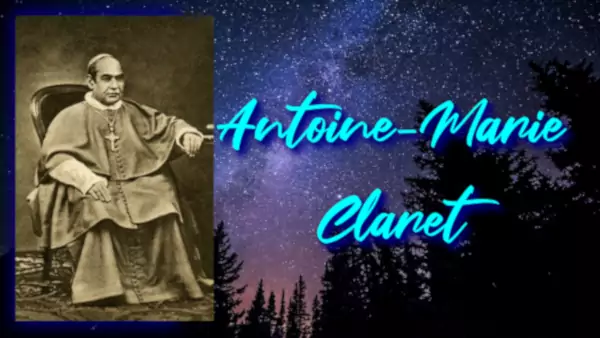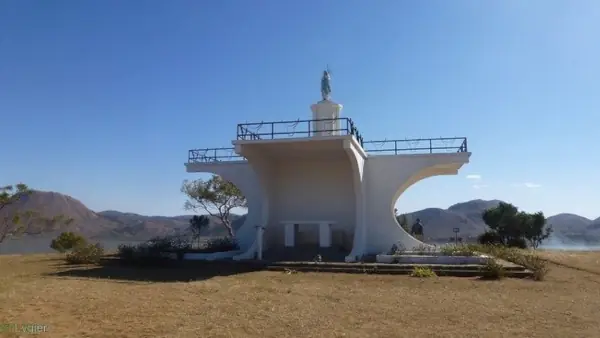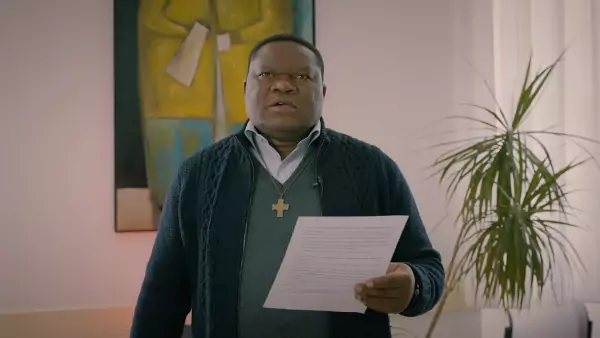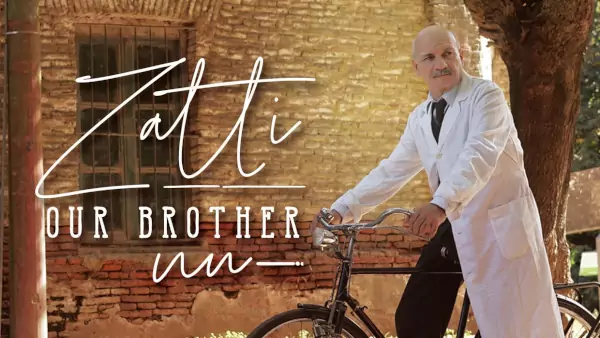24th October - The fifth of eleven children of a weaver named Jean Claret and JOséphine Clara, Antoine is born on 23rd December 1807 in Sallent in the diocese of Vic in Catalonia.
Antoine-Marie learns his father's trade, but studies Latin with the parish priest, who gives him a solid religious education and instils in him a great devotion to the Blessed Virgin. When he was 17 years old, his father sent him to a company in Barcelona to perfect his skills. While working, he attended evening classes to continue studying Latin and to learn printing. Pursuing a religious vocation, he entered the seminary in 1829 at the age of 22 and was ordained a priest in 1835. While assuming his duties as curate, he completed his theological studies. Wishing to be sent to a mission country, he left for Rome to be at the disposal of the Congregation for the Propagation of the Faith. There, he did a year's novitiate with the Jesuits in 1839 and followed the Spiritual Exercises of Ignatius of Loyola. However, his state of health prevented him from continuing on this path, so he left the novitiate and returned to Spain. He was then parish priest in Viladrau, where, no sooner had he arrived, on 15 August, he preached a mission with such success that other places were asking for it. He reveals gifts for preaching. Therefore, in May 1843, the bishop discharged him from his parish priesthood and sent him to parish missions. He preached many times throughout Catalonia and published more than 150 books and brochures with a direct pastoral orientation. He then went to the Canary Islands from 1848 to 1849 and, together with five other priests, founded the Congregation of the Sons of the Immaculate Heart of Mary in July 1849.
It was at the request of Isabel II, Queen of Spain, that Pius IX appointed him Archbishop of Santiago de Cuba on 20 May 1850. He was ordained bishop on the following October 6 and added Mary's name to his first name. At the age of 43, he left for Cuba on 28 December 1850 and arrived in the diocese he took charge of on 16 February 1851. The situation was deplorable. He began by instructing the twenty-five priests of the diocese and then brought in religious. He himself preached for two years, distributing nearly 100,000 books and pamphlets, more than 80,000 pious pictures, a large number of rosaries and medals. He regularly visited the parishes, giving countless homilies, regularising and blessing weddings, and confirming an impressive number of faithful. He founded a charitable home for children and another for the elderly poor, created about fifty parishes and ordained 36 priests. However, the landowners reproached him for his leniency towards their slaves, calling him a revolutionary, while the autonomists reproached him for being Spanish and the public authorities found him dangerously independent. He was the target of a large number of attacks, of which the one on 1 February 1856 almost killed him. In order to protect him, the Queen recalled him on 18 March 1857, wanting to make him her confessor, although she hoped that he would not cease to carry out his duties in the administration of the diocese of Cuba from Madrid. However, he withdrew from his episcopal office on 20 June 18591 and was appointed Archbishop in partibus of Traianopolis in Rhodope. Antoine-Marie followed the Queen on her travels, continuing to preach, thus becoming increasingly hated by the enemies of the regime in power. In September 1868, the queen was driven from the throne and had to go into exile in France, where Antoine-Marie followed her, leaving Spain for good on 30 September 1868. Despite increasingly precarious health, Monseigneur Claret was actively involved in the Spanish colony of Paris. In 1869 and 1870, he went to Rome to take part in the first Vatican Council, but he had to stop in Prades on 23 July 1870, seriously ill. His last public appearance was at the minor seminary, where he gave an instruction on July 27th, while the Spanish ambassador requested that he be arrested. The bishop of Perpignan, having been warned, was able to warn him in time, and he took refuge in the Cistercian abbey of Fontfroide, near Narbonne, where he died the following 24th October. Antoine-Marie Claret was beatified in 1934 by Pope Pius XI and canonised in 1950 by Pope Pius XII.








